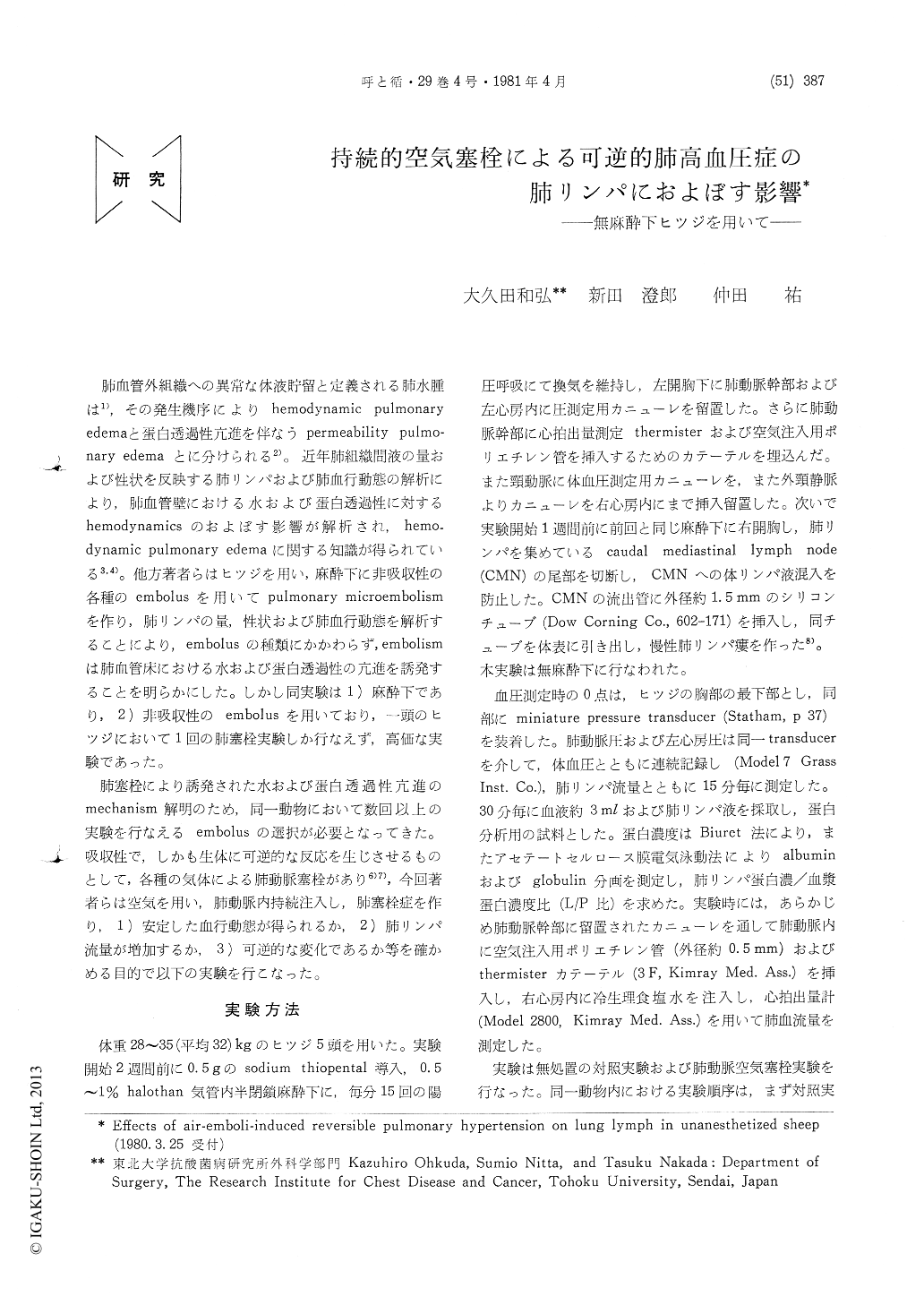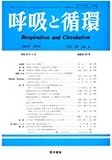Japanese
English
- 有料閲覧
- Abstract 文献概要
- 1ページ目 Look Inside
肺血管外組織への異常な体液貯留と定義される肺水腫は1),その発生機序によりhemodynamic pulmonary edemaと蛋白透過性亢進を伴なうpermeability pulmo—nary edemaとに分けられる2)。近年肺組織間液の量および性状を反映する肺リンパおよび肺血行動態の解析により,肺血管壁における水および蛋白透過性に対するhemodynamicsのおよぼす影響が解析され,hemo—dynamic pulmonary edemaに関する知識が得られている3,4)。他方著者らはヒツジを用い,麻酔下に非吸収性の各種のembolusを用いてpulmonary microembolismを作り,肺リンパの量,性状および肺血行動態を解析することにより,embolusの種類にかかわらず,embolismは肺血管床における水および蛋白透過性の亢進を誘発することを明らかにした。しかし同実験は1)麻酔下であり,2)非吸収性のembolusを用いており,一頭のヒツジにおいて1回の肺塞栓実験しか行なえず,高価な実験であった。
In five unanestnetized sheep chronically instru-mented with chronic lung lymph fistulas, we infusedair into the pulmonary arlery (its diameter of ca 300 μm) continuously, resulting in the increases in pulmonary arterial pressure (Ppa) and lung lymph flow (Qlym). The increases in Ppa were proportional to the volumes of injected bolus air: bolus air injection of 0.4, 0.5 and 1.0ml/kg produced the increases in Ppa of 35.2, 40.2 and 49.8 cmH2O respectively from their average base line of 28.0 cm H2O in 13 successfull embolization experiments. Following the bolus air injection, continuous infusion of air emboli of 0.06 ml/kg/min, maintained the elevated Ppa for one hour. After stopping of air emboli infusion, Ppa returned rapidly to base line level.
Qlym began to increase following Ppa elevation and showed a peak flow at the end of one hour embolization. After stopping of air infusion, Olym decreased gradually.

Copyright © 1981, Igaku-Shoin Ltd. All rights reserved.


